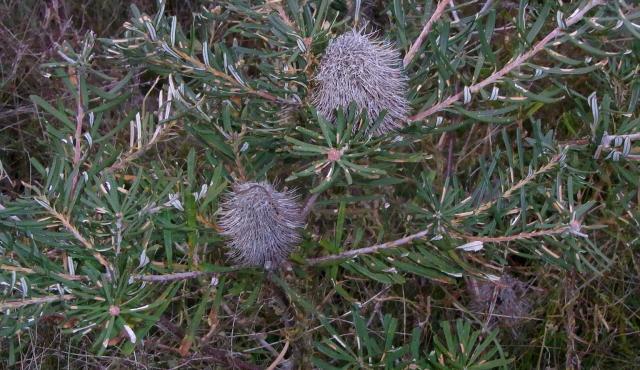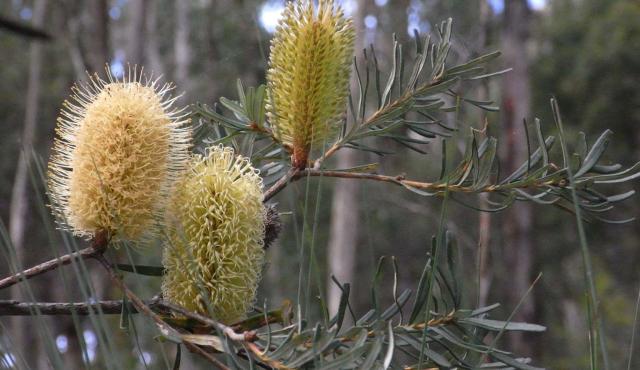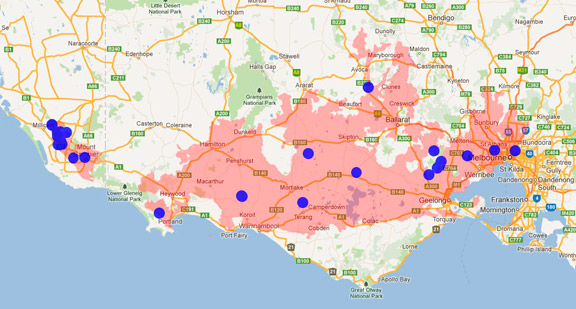A range of teacher professional learning programs will be developed to accompany the Biodiversity of the Western Volcanic Plains online outreach...




Silver Banksia
Banksia marginata
Inflorescences have up to 1000 flowers that open sequentially over several weeks. Pollination by nectar feeding birds, also bees and other insects and small mammals such as the Feathertail Glider, Eastern Pygmy Possum and Brown Antechinus.
| Details | Description |
| Type | Shrub |
| Group | Banksia |
| Identifying Characteristics | |
| Distinctive Features | Notch on the end of each leaf tip. Black, triangular seeds. |
| Life Form Group | Shrub |
| Life Form Codes | Medium Shrub (MS) |
| EVC types | EVC 175: Grassy Woodland |
| Native Status | Native to Australia |
| Taxonomy | |
| Phylum | Charophyta |
| Class | Equisetopsida |
| Order | Proteales |
| Family | Proteaceae |
| Genus | Banksia |
| Species | marginata |

Distribution maps indicate current and historic locations where species have been sighted.
Source: Atlas of Living Australia
| Endangered Status | |
| DEPI Advisory List | Not listed |
| FFG Act | Not listed |
| EPBC Act | Not listed |
The conservation status of species is listed within Victoria and Australia.
The Department of Environment and Primary Industry (DEPI) Advisory List consists of non-statutory advisory lists of rare or threatened flora and fauna within Victoria.
The Flora and Fauna Guarantee Act 1988 (FFG Act) lists threatened species in Victoria. Under the Act, an Action Statement is produced for each listed species.
The Environment Protection and Biodiversity Conservation Act 1999 (EPBC Act) is the Australian Government’s key piece of environmental legislation, listing nationally threatened native species and ecological communities.



